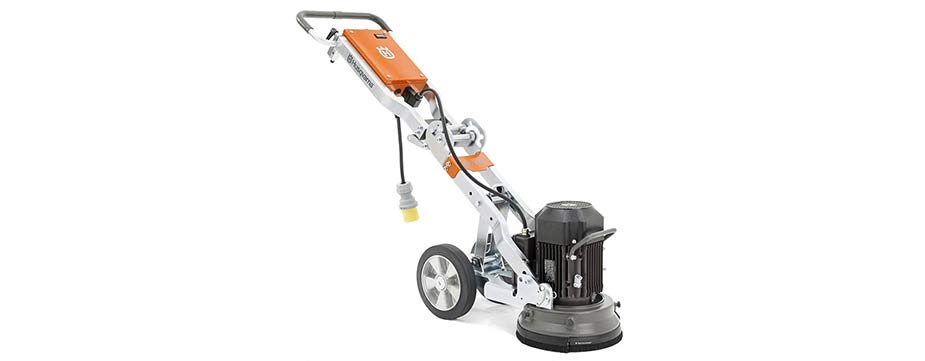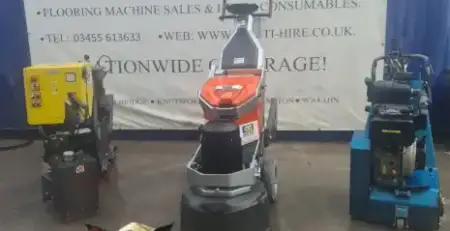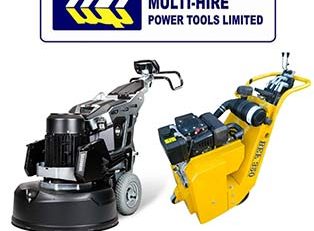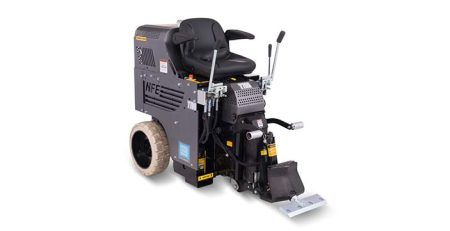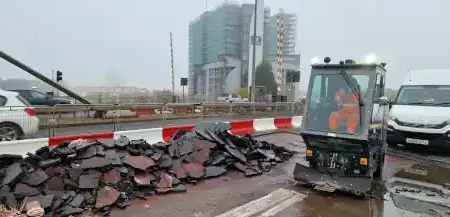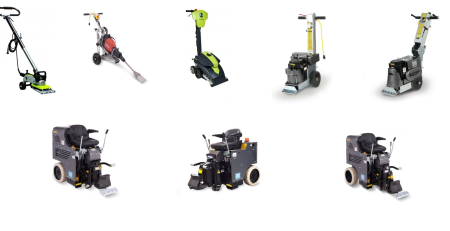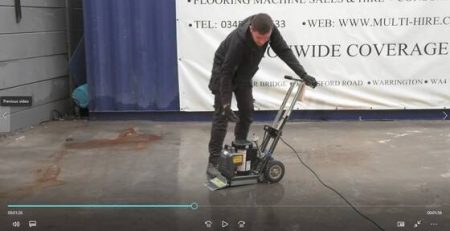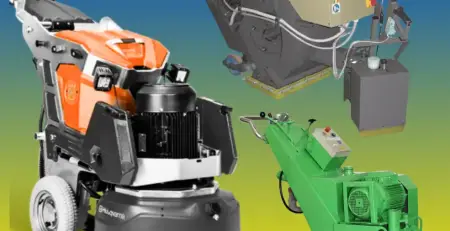What Are Floor Grinders Used for?
Floors, no matter how imperfect or inconsistent, can still look good with the help of a floor grinder. Also called concrete grinders, this type of machinery is a tool that makes a property look well-furnished without the need for alternative flooring. The process of floor grinding also ensures the longevity of the floor and improves its overall quality.
The “grind” in “floor grinders” may have a negative connotation surrounding it—it sounds like it damages a surface rather than make it durable. Yet, you can use these to smooth floors and many more. To know more about the uses of floor grinders, read this post further. Plus, you will also learn about their different types and benefits.
What Are Floor Grinders?
Floor grinders are machines used in many processes. Such processes include levelling, smoothing, finishing, or refinishing floor surfaces using abrasive tools, like diamond tools. Other than that, floor grinders can also act as scrapers, especially if you use carbide stripping accessories.
This machine is used in correcting surface issues, blemishes, and inconsistencies. These grinders also come in various specifications that you need to look into to ensure it meets your project’s needs.
Uses of Floor Grinders
So, what are floor grinders used for exactly? We’ve listed its uses below. Floor Grinders are used for concrete preparation. There are three processes involved in concrete floor preparation, namely grinding, honing, and polishing. Floor grinders are all-rounder machines that are applicable for many applications, such as the said processes. Floor Grinders have many other functions.
Other than a handy machine for concrete preparations, floor grinders serve different functions. Such functions include floor profiling before paint application, breaking up deposits from contaminants, and levelling unevenness. It can also be used as a scraper on old or failed surfaces to revive it.
Floor Grinders restore and improve concrete surfaces.
Are you faced with imperfect and inconsistent concrete? Floor grinders solve this dilemma, correct inconsistency issues, and come up with a smooth concrete surface as a result. You can also use them to restore old and damaged concrete surfaces.
Floor Grinders remove remnants on concrete surfaces.
It is usual for concrete floors to get remnants such as dried paint, epoxies, and other residues. Grinders are best used to remove these and results in a smooth surface.
Floor Grinders ease the flooring installation process.
Installing flooring is no easy task. But if you use floor grinders beforehand, it will be easy to install tiles, floorboards, and carpets. Best of all, floor grinding will improve the longevity of the floor itself.
Floor Grinders secure the condition of the floor.
If you own a warehouse, floor grinding will ensure its longevity and improve the floor’s durability. Having a durable floor is vital for warehouses, especially if it has high daily traffic and stores a wide variety of things.
How to Make Most Out of Floor Grinders
We’ve listed out ways on how you can make the most out of floor grinders for you to get access to more of the uses that these tools can offer.
Identify your purpose
Always know your end goal as to why you want to use a floor grinder. Suppose you wish to polish the concrete, remove the coating, or prepare the floor for future flooring installation. In that case, you must inform your tool or service provider, so they can conveniently identify the appropriate tool that suits your flooring needs.
Attachments matter
There are many attachments you can invest in to make the most out of your floor grinders. Three of the most commonly used attachments are the diamond-segmented tools, silicon-carbide stones, and tungsten-carbide inserts. Each attachment has a purpose which includes smoothing rough finishes, level spots, remove adhesives, profiling, and removing coatings.
The right tool matters
If you need a scraper, your floor grinder can do that. Simply attach carbide stripping accessories. If you need aggressive grinding, attach diamond accessories that have lower grits. Use diamond accessories with high grits if your project involves polishing and other grinding jobs.
Know the right size and type
Not all project specifications are alike, so you shouldn’t use one concrete grinder for all project types. Always consider the scope of your project before buying or renting a grinder. You will get to know more about the different floor grinder types further in this post.
Utilise the rotate button
If you want to extend the life of the diamond tool, you must utilise the rotate button that comes in floor grinders. This feature enables the abrasives to spin in another direction. Doing so prevents the inconsistencies in the wear patterns that slowly damage the diamond tooling in the long run.
Good technique means great results
If you are the handler of the machine, always know the importance of a good technique. Trust in the machine to do its job and avoid rushing the process; else, you will end up with bad results and redoing work on specific areas. Also, keep in mind that the way you handle a grinder depends on the type.
Components of a Floor Grinder
A floor grinder is nothing without the following components:
Diamonds
Diamonds are abrasive materials used as a scraper in the process of floor grinding. The size of diamonds used in floor grinders is represented in grit. The diamond size and the grit number are inversely proportional; hence, the smaller the diamond, the bigger the grit number is, and vice versa. The diamonds used in grinding tools are synthetic and are defined by quality, size, and concentration—these are not gem-quality ones.
Bonds
Without this part, nothing will hold the diamond tool in place. Bonds are categorized as hard, medium, and soft metal-bond, semi-metal bond, and wet/dry resin bond. The softer the bond is, the faster it wears away after every floor grinding process, and the shorter the diamond’s lifespan would be.
Different Types of Floor Grinders
Floor grinders are not a one-size-fits-all kind of tool. Hence, there is a specific floor grinder for a particular project. The success of your project at hand relies on the type of floor grinder you choose.
There are different options to choose from, and we’ve created a rundown to help you get started in selecting the correct type of floor grinder that gets the job done.
Hand-Held Grinders
For DIY enthusiasts out there, hand-held grinders may be perfect for your home transformation projects, such as polishing concrete kitchen or bathroom countertops. It is best used in areas that are hard to reach by larger equipment.
This handy tool is best for less complex grinder applications. Despite that, this tool can be used for light levelling, polishing, and removing materials like paint, glue, and even epoxy.
Walk-Behind Floor Grinders
It has the same functions as hand-held grinders, but walk-behind floor grinders can be used on larger floor and slab surfaces. Using this type of grinder allows you to take off the top layer of a surface and expose a new one.
Like hand-held grinders, you can use this to remove various coatings. Unfortunately, you cannot use this grinder in polishing concrete, but you can use it on floors made of timber.
This type grinder requires a person to push behind the equipment, and the same person should also control the speed and direction of the grinder. Walk-behind floor grinders run on electricity, diesel, or petrol.
Ride-on Floor Grinders
This type of floor grinder is needed for more extensive surface areas like showrooms, warehouses, outlets, shopping centres, and other large commercial establishment floors. This machinery can cover an entire commercial floor in a short period compared to when you use walk-behind floor grinders. These grinders can produce a flat and high gloss finish even in just a single pass.
This type of floor grinder is also perfect for projects with aggressive concrete grinding needs. Using this machinery is also effortless since a person only needs to ride this machine when operating. Ride-on floor grinders are indeed the ideal machine that enables grinders to do the work at hand but in comfort.
Benefits of Floor Grinding
Even if you are not in the construction industry, you, too, would benefit from having smooth, clean, and flat surfaces in your home or workplace. And do you know that floor grinders play a crucial role in making this possible? It also ensures the floor’s longevity and improves its quality, especially if it initially had imperfections and inconsistencies.
That, and there are more benefits of floor grinding than you think. Before you purchase or rent one, it is only rational to know how to benefit from such a machine. We have laid out some of these benefits for you:
It gives you a durable floor.
After a floor grinding process, the floor becomes firm, robust, and reliable. As a result, high or heavy traffic will inflict no damage on the floor. The floor is also durable in the sense that it won’t accumulate that much dirt.
It needs little to no maintenance.
A floor, after the floor grinding process, does not require intensive maintenance. Rough floors are challenging to clean as there could be parts of its surface that ordinary cleaning materials can hardly penetrate or that such floors need more effort to clean.
It is cost-effective.
Since the floor is already durable and needs minimal maintenance, then this means little to no costs. The machine also works optimally to effectively utilise the materials required for the floor construction, resulting in a bearable total cost.
It has stunning results.
Who does not want to live or work in an aesthetically pleasing place? Even if it’s simply smoothing a concrete floor, it could make a big difference in the overall look of a structure as it could result in a permanent shine on the floor, making it seem like it’s always clean.
It is not that harmful to the environment.
Nowadays, what is not harmful to the environment? However, the floor grinding process is not detrimental to the environment. The process is done indoors, and the dust is already reduced before it goes out to the environment.
Ways to Control Dust While Using Floor Grinders
There are two possible ways to control dust: wetting the floor before grinding or vacuuming the dust while grinding. Dust is both harmful to the environment and health; hence, managing it should be a part of the things you also need to consider.
Grinders, Scrabblers, and Scarifiers: Which Do You Need?
You can use three machines for concrete resurfacing: grinders, scabblers, and scarifiers. Each has a specific purpose that makes these different from one another.
Grinders are best used for profiling, cleaning, and polishing concrete and resealing wood flooring. Other than concrete, grinders can also be applied on different types of surfaces such as stone, terrazzo, and wood. In addition, you can also use grinders in removing materials such as glue, epoxy, and paint.
Scabblers roughen areas instead of smoothening them like how grinders would. Scabblers are best used for removing loose concrete and levelling joints. You can also use them to make ramps slip-resistant by creating textures on the surface. Scabbling involves the process of pounding the concrete in rapid succession until it achieves the required depth.
Compared to grinders, scarifiers are more aggressive as they involve striking a concrete surface at high-speed levels using cutting wheels. The process results in a rough profile perfect for certain overlays and bonding for specific coatings that require such. You need to identify whether your project needs scarifying or not because the process can result in too aggressive profiles.
Where to Buy Quality Floor Grinders in the UK
For your future surface preparation needs, you can count on Multi-Hire Power Tools Limited. Whether you are preparing your floor for polishing or alternative flooring, we’ve got you covered with our wide range of diamond floor grinders and concrete floor polishers. Should you seek our assistance, ring us at 03455 613633 for enquiries or if you need help with your floor grinders.

